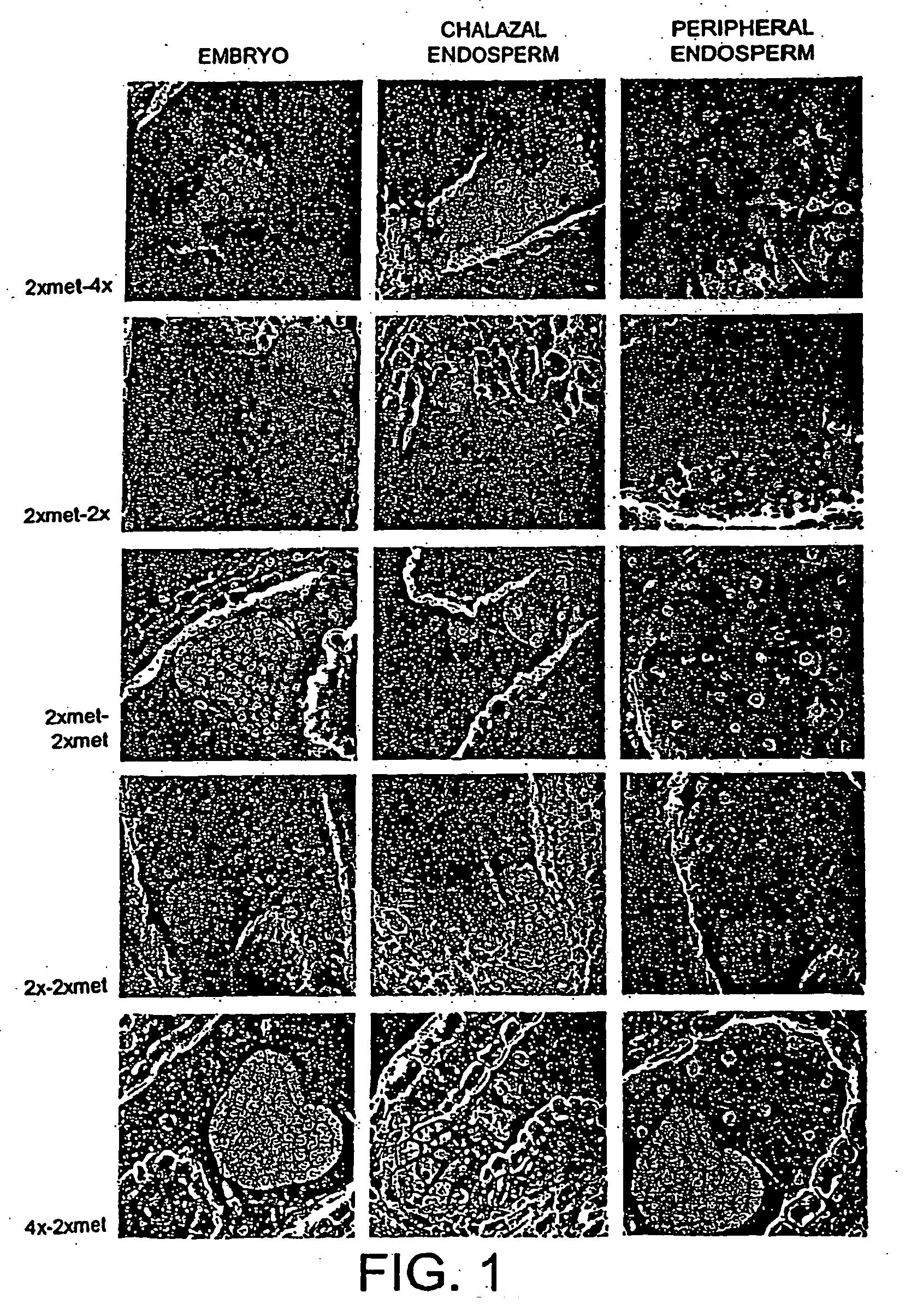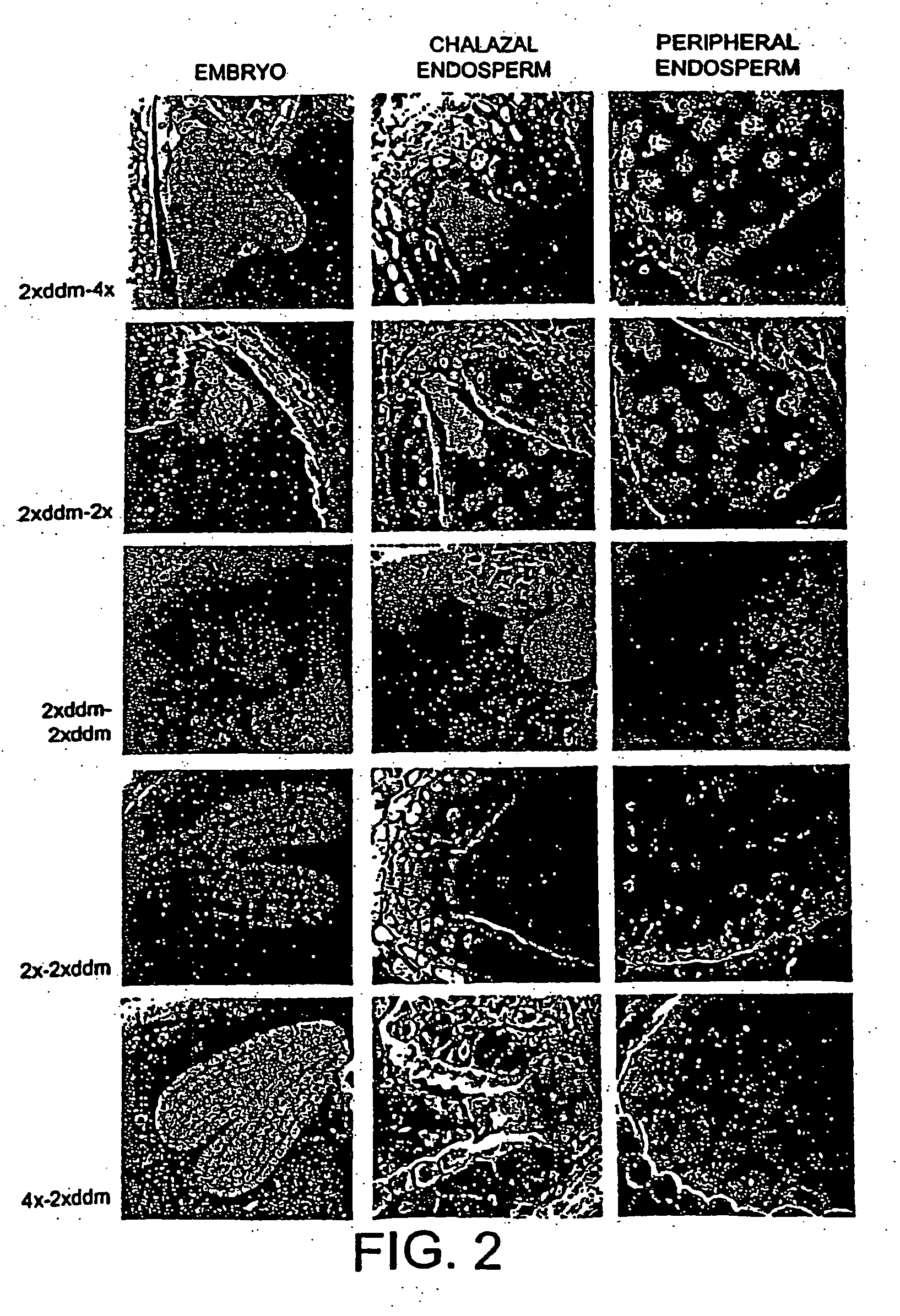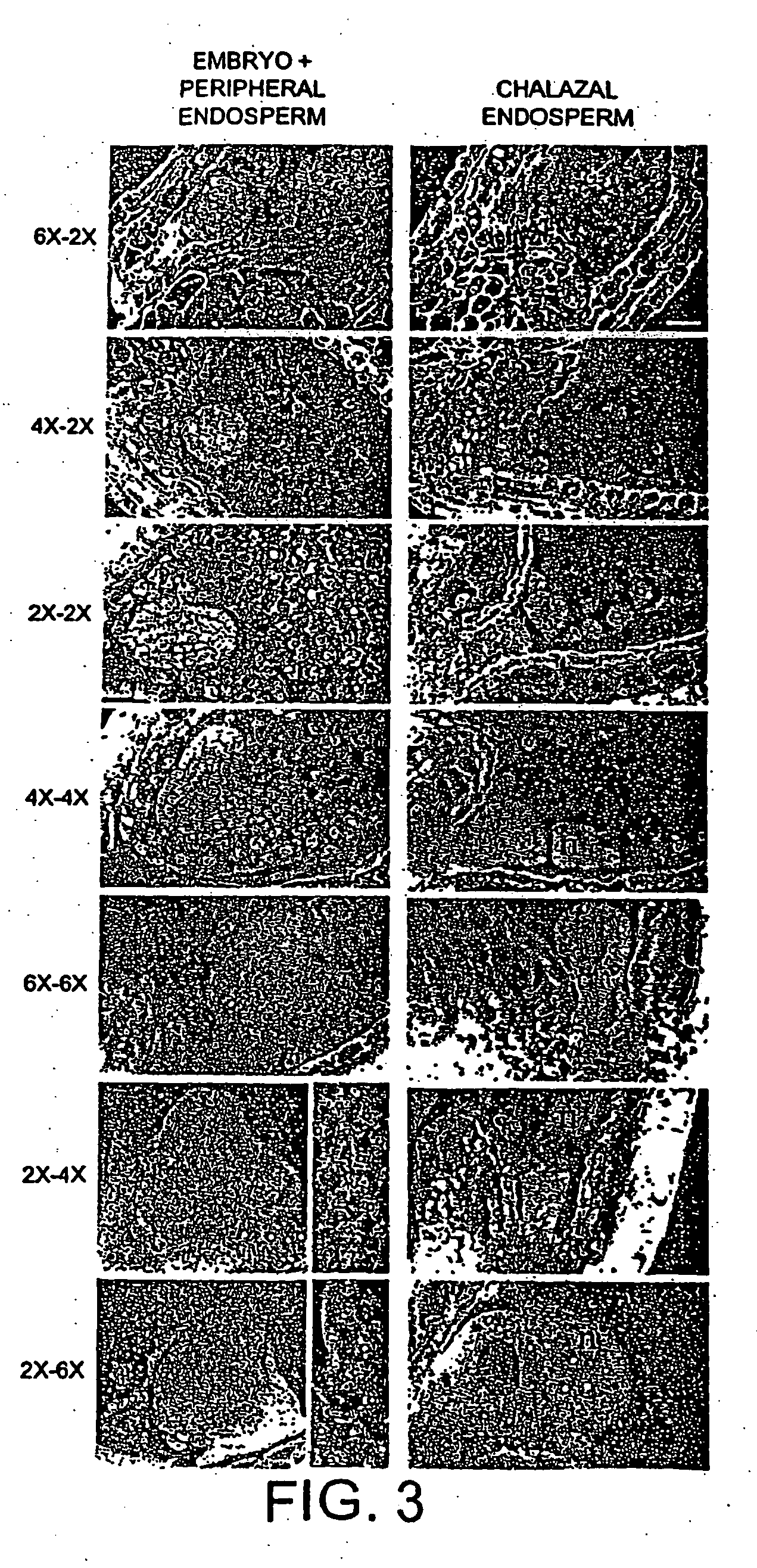Modified plants
- Summary
- Abstract
- Description
- Claims
- Application Information
AI Technical Summary
Benefits of technology
Problems solved by technology
Method used
Image
Examples
example 1
The use of gametes from hypomethylated plants (Met1as and ddm) mimics the interploidy cross effect (alters number of endosperm nuclei formed and consequently the weight of mature seed).
[0116] Reciprocal interploidy (different ploidy) crosses between diploid (2x), and tetraploid (4x) (Scott et al., 1998) or hexaploid (6x) (Scott et al., 1998) Arabidopsis plants result in changes to both the size of the endosperm, in terms of the number of endosperm nuclei and volume of the chalazal endosperm, and to the dry weight of mature seeds (see Table 1) and the viability of the seed (Table 1). This is the interploidy cross effect.
Crosses Involving Met1as Plants
[0117] Intraploidy (same ploidy) crosses between 2x Met1as plants and 2x wild type plants mimic this effect (see Table 1 and FIGS. 1 and 3). A cross between a 2x Met1as plant as seed parent and a 2x wild type plant as pollen parent produces seeds with an average of 450 endosperm nuclei (an increase of 130% over 2xmet-2xmet cross), a...
example 2
Construction of expression cassettes that restrict gene expression to either the gynoecium or the stamen.
[0126] Example 1 demonstrates that uniparental demethylation can be used to control seed size. However, the increase in seed weight in the cross 2xmet1a / s-2x is smaller than for the corresponding interploidy cross (2x-4x). This may be due to the reduced fitness of the 35SMet1as female lines since demethylation is approximately constitutive. In order to reduce and eliminate this effect and to allow seed size changes to be obtained in a single plant it is necessary to restrict demethylation as much as possible to the germ line or gametes.
[0127] a. Designing a General Female-Germ Line Specific Expression Vector
[0128] An expression vector based on the female-specific AGL5 promoter (Sessions et al. (1998)) is constructed as described below. The nos polyA signal sequence is excised from pCaMVNEO (Fromm et al. (1986)) as a BamHI, Hind III fragment and cloned between the BamHI and Hi...
example 3
Construction of chimaeric gene fusions between the female (Example 2a) and male (Example 2b) germ-line specific cassettes and the Met1 antisense gene.
[0132] Expression of the MET1 gene can be reduced in the female or male germ lines by employing techniques known in the art. For example MET1 down-regulation can be achieved by expressing antisense MET or antisense MET1 fragments or sense MET1 or partial sense MET1 or ribozymes directed against MET1 or combination of the preceding, from promoters expressed in the required germ-line. Below is an example of an antisense MET1 approach.
[0133] a) The Construction of a Female Germ-Line Specific Met1as Gene
[0134] The MET1 cDNA is 4.7 kb long and is isolated by RT-PCR from Arabidopsis cDNA using the primers MET1F and MET1R.
(SEQ ID NO:5)5′ACTCGAGATTTTGAAAATGGTGGAAAATGGGGC 3′MET1F XhoI(SEQ ID NO:6)5′ACCCGGGTGGTTATCTAGGGTTGGTGTTGAGGAG 3′MET1R SmaI
[0135] The resulting MET1 PCR fragment is then cloned as a SmaI, XhoI fragment between ...
PUM
| Property | Measurement | Unit |
|---|---|---|
| Volume | aaaaa | aaaaa |
| Fraction | aaaaa | aaaaa |
| Fraction | aaaaa | aaaaa |
Abstract
Description
Claims
Application Information
 Login to view more
Login to view more - R&D Engineer
- R&D Manager
- IP Professional
- Industry Leading Data Capabilities
- Powerful AI technology
- Patent DNA Extraction
Browse by: Latest US Patents, China's latest patents, Technical Efficacy Thesaurus, Application Domain, Technology Topic.
© 2024 PatSnap. All rights reserved.Legal|Privacy policy|Modern Slavery Act Transparency Statement|Sitemap



